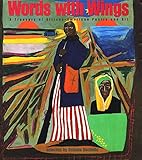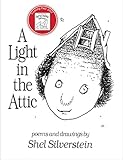Pacing Guide for Words with Wings: A Treasury of African-American Poetry and Art
Day 1
Begin Genre Lesson
Day 2
Genre Lesson (continued)
Complete the Genre Lesson Independent Practice in the Student Packet
Day 3
Begin Reading “Auction Street,” “Incident,” “John, Who Is Poor,” “Your World,”
Begin the Student Packet Worksheets
Day 4
Finish Reading “Auction Street,” “Incident,” “John, Who Is Poor,” “Your World,”
Complete the Student Packet Worksheets
Day 5
Begin Lesson 1
Day 6
Lesson 1 (continued)
Complete the Independent Practice for Lesson 1 in the Student Packet
Day 7
Begin Reading “Women,” “Those Winter Sundays,” “Listen Children,” “Fifth Grade Autobiography”
Begin the Student Packet Worksheets
Day 8
Finish Reading “Women,” “Those Winter Sundays,” “Listen Children,” “Fifth Grade Autobiography”
Complete the Student Packet Worksheets
Day 9
Begin Lesson 2
Day 10
Lesson 2 (continued)
Complete the Independent Practice for Lesson 2 in the Student Packet
Day 11
Begin Reading “Little Brown Baby,” “We Alone” “Rhapsody,” “Aunt Sue’s Stories”
Begin the Student Packet Worksheets
Day 12
Finish Reading “Little Brown Baby,” “We Alone” “Rhapsody,” “Aunt Sue’s Stories”
Complete the Student Packet Worksheets
Day 13
Begin Lesson 3
Day 14
Lesson 3 (continued)
Complete the Independent Practice for Lesson 3 in the Student Packet
Day 15
Begin Reading “Primer,” “How Poems are Made,” “This Morning,” “Night”
Begin the Student Packet Worksheets
Day 16
Finish Reading “Primer,” “How Poems are Made,” “This Morning,” “Night”
Complete the Student Packet Worksheets
Day 17
Begin Lesson 4
Day 18
Lesson 4 (continued)
Complete the Independent Practice for Lesson 4 in the Student Packet
Day 19
Begin Reading “Growing Up,” “Legacies,” “My People,” “Human Family”
Begin the Student Packet Worksheets
Day 20
Finish Reading “Growing Up,” “Legacies,” “My People,” “Human Family”
Complete the Student Packet Worksheets
Day 21
Begin Lesson 5
Day 22
Lesson 5 continued)
Complete the Independent Practice for Lesson 5in the Student Packet
Day 23
Review for the Unit Assessment
Day 24
Unit Assessment








amazing thanks for all your hard work in sharing and putting this information together
Unfortunately, not all children's literature sends the messages that we want children to learn. Children's books often contain the same stereotypes and biases of other media, and because children are interested in a story's plot and characters, it is unlikely that they will know or consider whether a book includes racist messages or other stereotypes. However, if students are repeatedly exposed to biased representations through words and pictures, there is a danger that such distortions will become a part of their thinking. It is, therefore, the responsibility of adults to help children select literature that is both entertaining and that provides children with accurate representations of all people.
Additionally, because there is such a relatively small number of children's books about people of color, it is extremely important that educators make every effort to see that high-quality children's literature by and about these groups is made available to children
Nice statement!
The use of the despicable N-word is part of history. It has to be included to keep the teaching of history accurate, but it also gives instructors the opportunity to teach about the injustices that brought about the use of that term; how some are still in place; and how people of all colors are currently working to counter those injustices. As a teacher of 30 years, I have come to realize that children are strong, insightful, compassionate, and have a deep sense of justice. Sometimes they teach us more than we teach them. The N-word is only one of many hate terms, and while it is a vile term, it can be used as a spring board to impart knowledge that can help the cause of justice.
I noticed that some of the poems use "the N-word", and while it may fit in context some may have a problem with it. I definitely wouldn't use it with my 5th graders.
That is our history.
I used this unit and the poem as written. I feel students will come in context with many different words and it is our job to teach that our authors write in many different ways and they use language that may not be appropriate in every setting. I teach my students to think of other words that could possibly fit in the inappropriate word's place.
We are reading a biography of Jackie Robinson and my fifth graders were given a talk before we started about seeing an offensive word such as n****r. There are also other negative words just as offensive. In the context of the time period and having background knowledge of the slavery during the Civil War era and Civil Rights movement, students can handle the reality of the use of this word. They understand the seriousness of the topic and appreciate the struggles suffered by so many. If we are teaching children to be tolerant, we must also show the ugly side to contrast it against a future of equal opportunities for all.